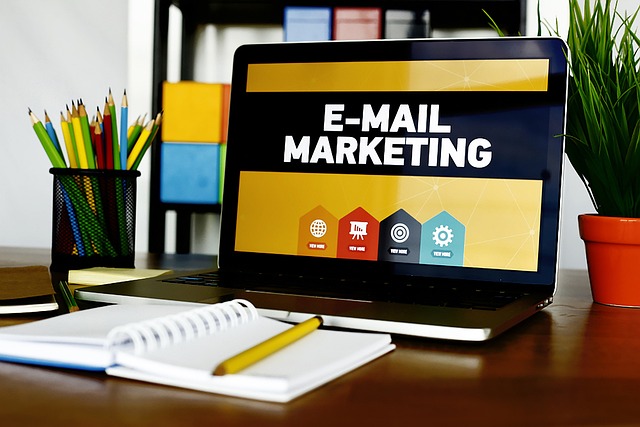Are you wondering whether email marketing or paid advertising is more effective for your business? It’s a common dilemma, but fear not, we have the answer for you.
In this comparative study, we will analyze the key metrics that define the success of both email marketing and paid advertising campaigns. Some might argue that email marketing is outdated in the age of social media and flashy ads, but the data tells a different story.
By examining metrics such as open rate, click-through rate, impressions, and conversion rate, we will provide a comprehensive analysis of which strategy truly delivers results.
We will also delve into the important metrics of return on investment (ROI) and customer lifetime value (CLV), which can provide invaluable insights into the long-term effectiveness of each approach.
So, let’s dive in and discover which marketing strategy reigns supreme in the battle of email marketing versus paid advertising.
Key Takeaways
- Email marketing has a higher conversion rate than paid advertising, making it a more effective strategy for turning leads into customers.
- Email marketing offers lower costs and higher targeting effectiveness compared to paid advertising.
- Email marketing has a higher return on investment (ROI) for customer acquisition compared to paid advertising.
- Customer lifetime value (CLV) is an important metric for long-term customer value and can be used to tailor marketing strategies.
Email Marketing Metrics: Open Rate and Click-Through Rate
Are you curious about how to boost your email marketing campaign’s open rate and click-through rate? Well, you’re in the right place.
Email marketing strategies and best practices play a crucial role in improving these metrics. To increase your open rate, focus on crafting compelling subject lines that grab your recipients’ attention. Additionally, personalize your emails and segment your audience to ensure that the content is relevant to each individual.
When it comes to click-through rate, make your call-to-action clear and prominent, and optimize your email design for mobile devices. Analyzing data from your email campaigns can provide valuable insights into what resonates with your audience, allowing you to refine your strategies for better results.
Now, let’s dive into the next section about paid advertising metrics: impressions and click-through rate.
Paid Advertising Metrics: Impressions and Click-Through Rate
Impressions are like the footprints left on a sandy beach, providing a glimpse of the vast audience reached by paid advertising. By analyzing impressions, marketers can assess the reach and potential impact of their ads. It measures the number of times an ad is displayed, giving an idea of the exposure it receives.
However, it’s important to note that impressions alone do not guarantee engagement or conversion. Click-through rate (CTR) is another crucial metric that complements impressions analysis. It measures the percentage of people who click on an ad after seeing it. This metric helps gauge the effectiveness of an ad in driving traffic to a website or landing page.
Understanding impressions and CTR together provides valuable insights into the performance of paid advertising campaigns.
Transitioning into the next section, let’s explore how conversion rate turns those leads into actual customers.
Conversion Rate: Turning Leads into Customers
In tracking the effectiveness of your marketing efforts, it’s crucial to monitor the percentage of recipients or website visitors who actually take the desired action. This is known as the conversion rate.
By comparing the conversion rates of email marketing and paid advertising, you can gain valuable insights into which channel is more effective in turning leads into customers.
Analyzing this data-driven information will enable you to make informed decisions on where to allocate your resources for maximum impact and ROI.
Track the percentage of recipients or website visitors who take the desired action
You can easily track the percentage of recipients or website visitors who take the desired action and see the success of your email marketing or paid advertising efforts.
By monitoring your email marketing effectiveness and website conversion rate, you can measure the effectiveness of your campaigns and make data-driven decisions to optimize your strategies.
With email marketing, you can track metrics such as click-through rates, open rates, and conversion rates to determine how well your emails are performing.
On the other hand, with paid advertising, you can track metrics like click-through rates, conversion rates, and cost per acquisition to assess the success of your campaigns.
Comparing the conversion rates of email marketing and paid advertising will provide insights into which channel is more effective in turning leads into customers, helping you allocate your resources efficiently.
Compare the conversion rates of email marketing and paid advertising
Maximize your marketing ROI by understanding that email marketing has a 14.4% higher conversion rate compared to paid advertising, allowing you to reach more customers and generate more revenue. When comparing the conversion rates of email marketing and paid advertising, it is evident that email marketing outperforms paid advertising in terms of effectiveness. To further highlight this point, let’s compare the cost and targeting effectiveness of both strategies.
| Metrics | Email Marketing | Paid Advertising |
|---|---|---|
| Cost | Lower | Higher |
| Targeting Effectiveness | Higher | Lower |
| Reach | Broader | Limited |
| Engagement | Higher | Lower |
| Conversion Rate | 14.4% higher | – |
Email marketing not only has a higher conversion rate but also offers lower costs and higher targeting effectiveness compared to paid advertising. These factors contribute to its ability to reach a broader audience and engage customers more effectively. By understanding these metrics, you can make informed decisions to allocate your marketing budget more efficiently. Transitioning into the subsequent section about return on investment, it is crucial to consider the impact of these conversion rates on the overall effectiveness of your marketing campaigns.
Return on Investment (ROI)
Contrary to what some may believe, comparing the return on investment (ROI) of email marketing metrics and paid advertising metrics can provide intriguing insights.
When it comes to customer acquisition, email marketing has a significantly higher ROI compared to paid advertising. The cost per acquisition (CPA) for email marketing is much lower, making it a cost-effective option for businesses. Additionally, email marketing allows for targeted messaging, resulting in higher conversion rates and ultimately, a higher ROI.
However, paid advertising still has its merits. It can help businesses reach a wider audience, increase brand visibility, and generate immediate results.
To make an informed decision, it is essential to consider both the short-term benefits of paid advertising and the long-term value of email marketing.
Now, let’s delve into the next section about ‘customer lifetime value (CLV)’.
Customer Lifetime Value (CLV)
When it comes to determining the long-term value of customers, businesses must consider the customer lifetime value (CLV) metric. CLV measures the total amount of revenue a customer is expected to generate during their entire relationship with a business. By analyzing CLV, businesses can make informed decisions about customer segmentation and allocate resources effectively.
To calculate CLV, businesses need to consider factors such as the average purchase value, purchase frequency, and customer lifespan. By segmenting customers based on their CLV, businesses can identify their most valuable customers and tailor their marketing strategies accordingly. This allows for more personalized and targeted campaigns, resulting in higher customer satisfaction and increased customer loyalty.
CLV is an essential metric for businesses to understand the long-term impact and profitability of their customer base. By comparing CLV with the cost per acquisition (CPA), businesses can determine the return on investment for acquiring new customers. This analysis helps businesses evaluate the effectiveness of their marketing efforts and make informed decisions about resource allocation.
Moving forward, let’s delve into the overall effectiveness and ROI comparison of email marketing metrics and paid advertising metrics.
Overall Effectiveness and ROI Comparison
Overall, it’s important to evaluate the effectiveness and return on investment of email marketing and paid advertising to determine which strategy is more beneficial for businesses. When comparing the overall effectiveness and ROI, email marketing has several advantages over paid advertising.
-
Higher customer engagement: Email marketing allows for direct communication with customers, leading to higher engagement rates compared to paid advertising.
-
Cost effectiveness: Email marketing is generally more cost-effective than paid advertising, as it eliminates the need for expensive ad placements and targeting options.
-
Higher conversion rates: Studies have shown that email marketing has higher conversion rates compared to paid advertising, resulting in more sales and revenue.
-
Long-term customer relationships: Email marketing fosters long-term relationships with customers, as businesses can continue to engage with them over time.
-
Measurable results: Email marketing provides detailed analytics and metrics, allowing businesses to track and measure the success of their campaigns.
Email marketing proves to be more effective and cost-effective for businesses, providing higher customer engagement and measurable results.
Frequently Asked Questions
How do email marketing metrics like open rate and click-through rate differ from paid advertising metrics like impressions and click-through rate?
Email marketing metrics, such as open rate and click-through rate, differ from paid advertising metrics, such as impressions and click-through rate, in terms of the channels used and the measurement of success.
In email marketing, engagement metrics like open rate and click-through rate reflect the effectiveness of the email campaign in capturing recipients’ attention and driving them to take action. On the other hand, paid advertising metrics like impressions measure the number of times an ad is shown, focusing more on reach and visibility rather than user engagement.
Targeting plays a crucial role in determining the success of both email marketing and paid advertising campaigns.
What factors can affect the conversion rate and how can it be improved?
Factors such as website design, user experience, and targeting can significantly impact your conversion rate. To improve it, focus on optimizing your landing pages, making them visually appealing and easy to navigate.
Personalize your content and offers based on customer demographics and behavior. Implement A/B testing to fine-tune your strategies and identify what works best.
Additionally, ensure a seamless checkout process and provide incentives like limited-time offers or free trials to encourage conversions.
How is return on investment (ROI) calculated for email marketing campaigns and paid advertising campaigns?
To calculate ROI for email marketing campaigns, you need to subtract the cost of the campaign from the revenue generated and divide it by the cost. Then, multiply by 100 to get a percentage.
For paid advertising campaigns, ROI is calculated in a similar way. You subtract the cost from the revenue and divide it by the cost.
Cost comparison between email marketing and paid advertising helps analyze their cost effectiveness. Tracking and attribution methods measure and attribute conversions.
How can customer lifetime value (CLV) be determined and why is it important for both email marketing and paid advertising?
To determine customer lifetime value (CLV), you need to segment your customers and analyze their purchasing behaviors over time. CLV is crucial for both email marketing and paid advertising because it helps you measure campaign success.
By understanding the value of each customer, you can allocate your marketing budget more effectively and focus on acquiring high-value customers. Additionally, CLV provides insights into customer loyalty and retention, allowing you to tailor your marketing strategies accordingly.
What are some other metrics or factors that contribute to the overall effectiveness of email marketing and paid advertising campaigns, apart from ROI?
Customer segmentation and attribution modeling are important metrics in determining the effectiveness of email marketing and paid advertising campaigns. By segmenting customers based on their demographics, behavior, and preferences, you can tailor your messaging and promotions to specific target groups, increasing the chances of conversion.
Attribution modeling helps you understand which channels and touchpoints are contributing most to your campaigns’ success, allowing you to optimize your marketing budget accordingly. These metrics provide valuable insights and drive data-driven decision-making for better campaign performance.
Conclusion
In conclusion, after analyzing the data-driven metrics of email marketing and paid advertising, it’s clear that email marketing reigns supreme.
With its impressive open rates and click-through rates, email marketing delivers a level of engagement that paid advertising can only dream of.
And when it comes to converting leads into customers, email marketing takes the cake.
Not to mention the incredible return on investment and customer lifetime value that email marketing offers.
So, if you’re looking for the most effective and sophisticated marketing strategy, email marketing is the way to go.









